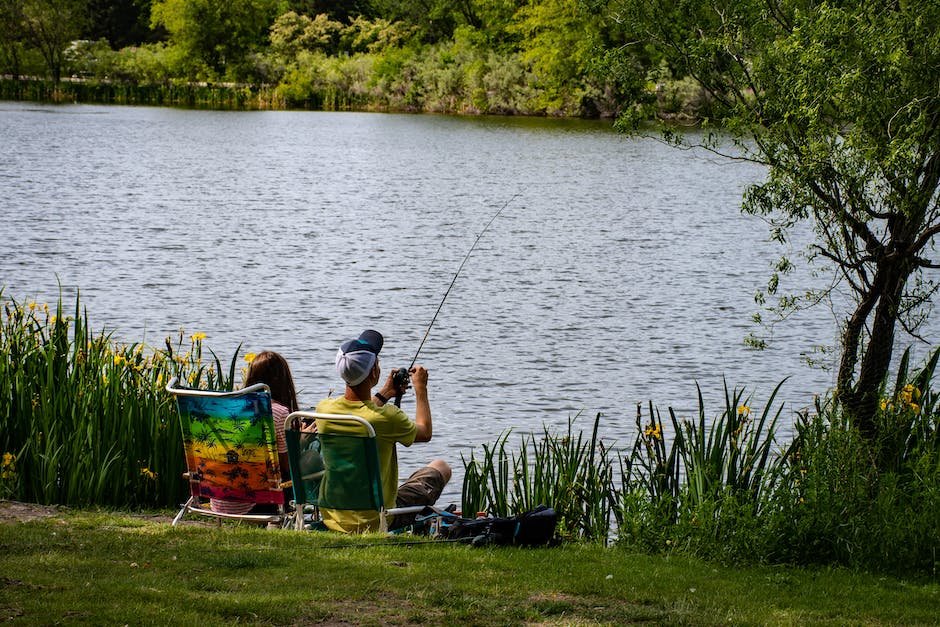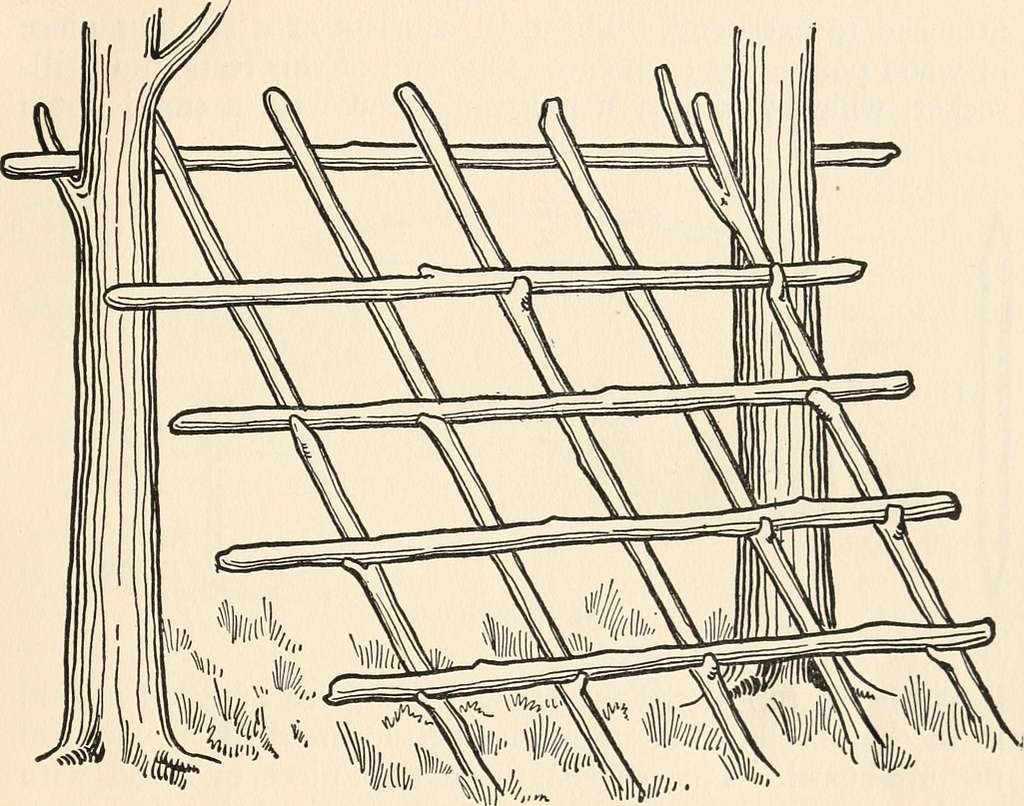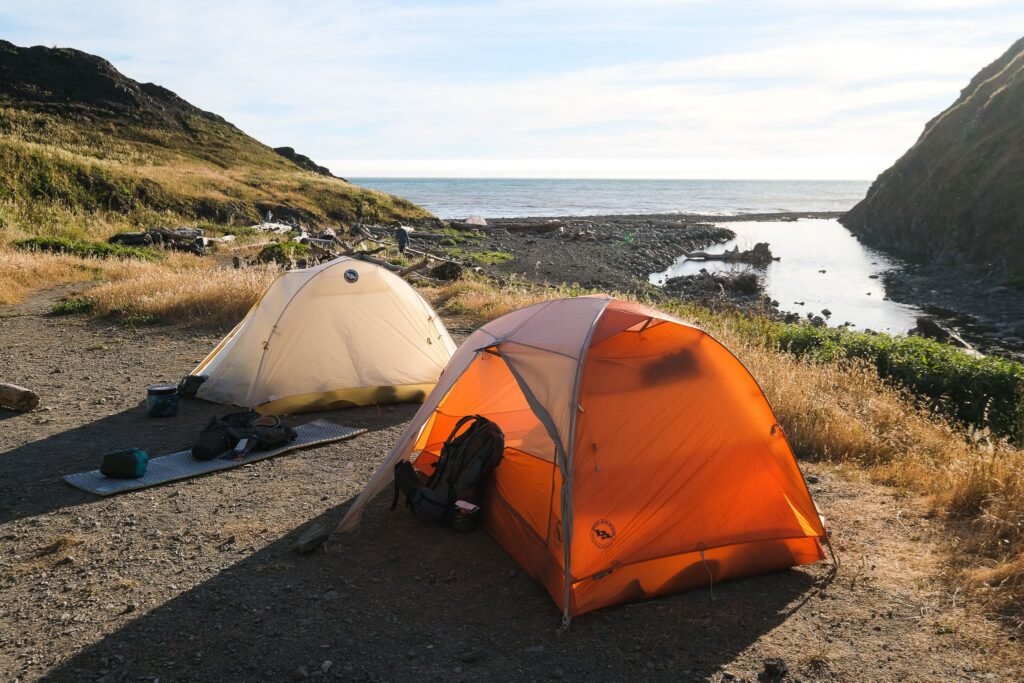Now Reading: How to Make Your Own Fishing Gear in the Wild
-
01
How to Make Your Own Fishing Gear in the Wild

How to Make Your Own Fishing Gear in the Wild
Survival in the wild often presents unforeseen challenges, demanding resourcefulness and ingenuity to navigate through the raw elements. While one may typically associate fishing gear with neatly stocked tackle boxes and shiny reels, these modern luxuries are rendered obsolete when stranded far from civilization’s grasp. As the sun sets on the towering treetops and the tranquil streams whisper secrets only nature knows, the avid explorer yearns for a fisherman’s bounty. Fear not, for with a touch of creativity and a dash of wilderness wisdom, you can fashion your own fishing gear right on the spot. So, let us delve into the untamed realm of rustic angling, where nature and craftsmanship intertwine to reel in a triumphant catch.
Table of Contents
- Gathering Natural Materials for Crafting Fishing Gear
- Understanding the Basic Techniques of Handcrafted Fishing Equipment
- Step-by-Step Guide to Making a Primitive Fishing Rod
- Constructing Efficient Fish Hooks from Found Materials
- Enhancing Your Survival Fishing Kit with Additional DIY Tools
- Q&A
- Wrapping Up

Gathering Natural Materials for Crafting Fishing Gear
When it comes to crafting your own fishing gear, there’s something indescribably satisfying about using materials found right in nature. Not only does it allow you to tap into your creative side, but it also opens up a world of possibilities for customization and personalization.
To get started, one of the most popular and versatile materials used for crafting fishing gear is bamboo. Known for its strength and flexibility, bamboo can be used to create fishing rods that are not only functional but also visually stunning. Whether you choose to harvest your own bamboo stalks or purchase them from a supplier, remember to carefully select the ones that are straight and sturdy.
Another natural material that can be gathered for crafting fishing gear is feathers. Feathers are perfect for creating fly lures, as they mimic the appearance of insects that fish feed on. Whether you collect feathers from local birds or purchase them from specialized suppliers, make sure to wash and dry them thoroughly before using. Once your feathers are prepped, you can combine them with other materials to create enticing and realistic fly lures.
- Some other natural materials that can be gathered for crafting fishing gear include:
- Leather or suede for crafting fishing tackle bags or reel cases.
- Seashells for creating unique sinkers or bobbers.
- Various woods for carving your own fishing lures or bait.
- Plant fibers for weaving fishing nets or creating lines.
Remember, when , always ensure you have the necessary permits and follow local regulations. Respecting the environment and practicing sustainable harvesting methods will not only enhance your fishing experience but also contribute to the conservation of natural resources.

Understanding the Basic Techniques of Handcrafted Fishing Equipment
When it comes to fishing, using handcrafted equipment adds a certain charm and personal touch to the sport. It allows anglers to connect with the tradition and artistry of crafting their own tools. Whether you are a seasoned angler or a novice looking to delve into the world of handmade fishing gear, understanding the basic techniques is essential.
Fly Tying: One of the most fundamental techniques in crafting fishing equipment is fly tying. This involves creating artificial flies that mimic the appearance and behavior of natural insects or other aquatic organisms that fish love to prey on. With a combination of feathers, furs, threads, and hooks, anglers can tie intricate patterns that are irresistible to fish.
Rod Building: Crafting your own fishing rod is an art form in itself. Anglers carefully select the materials and components to build a custom rod that suits their fishing style and preferences. From choosing the type of rod blank to adding the perfect grip and reel seat, the process allows for the ultimate customization. Handcrafted rods offer a unique feel and balance, making your fishing experience truly one-of-a-kind.
Lure Making: Creating your own fishing lures is both a science and an art. Anglers experiment with different shapes, colors, and materials to mimic the movements and appearance of baitfish or other prey. Handcrafted lures provide endless possibilities for customization, allowing you to fine-tune your presentation and entice even the most finicky fish. From wooden crankbaits to silicone skirts and spinners, the techniques of lure making bring out the creativity and craftsmanship in anglers.

Step-by-Step Guide to Making a Primitive Fishing Rod
Are you ready to embark on a journey of crafting your very own fishing rod? With just a few simple tools and some natural materials, you can create a primitive fishing rod that will allow you to reel in your next catch. Follow this step-by-step guide and dive into the world of hands-on fishing rod making!
Gather the Materials
Before you start, gather the materials you will need for this project:
- A sturdy, flexible sapling or bamboo pole
- Strong fishing line or natural cordage
- A sharp knife or hatchet
- A small piece of bone or hardwood for the hook
- Feathers, insects, or bits of fabric for bait
Carve the Rod
With your chosen sapling or bamboo pole in hand, use your knife or hatchet to carefully remove any branches or knots. Smooth out any rough spots and shape the pole to your preferred length, keeping in mind that it should be approximately the same height as you when held upright. Leave a few inches at one end for the handle grip.
Next, carve a notch near the handle grip to hold the fishing line securely. Make sure it’s wide enough to prevent the line from slipping. Take your time and be patient, as precision is key for a successful fishing rod!
Attach the Line and Hook
Measure a length of fishing line or natural cordage and tie one end securely to the notch on the rod. Wrap the line around the notch several times for added strength. Allow enough line to extend beyond the length of your rod, as this will be used for casting and reeling in your catch.
Now, take your small piece of bone or hardwood and carve it into a hook shape. Smooth any rough edges and sharpen the point. Attach the hook to the opposite end of the fishing line using a secure knot or by wrapping the line tightly around it. Your primitive fishing rod is almost complete!
Remember, practice and patience are vital in mastering the art of primitive fishing. Experiment with different baits, casting techniques, and locations to increase your chances of success. With your handmade fishing rod, you’re ready to immerse yourself in an ancient technique and experience the thrill of reeling in your own dinner!
Constructing Efficient Fish Hooks from Found Materials
Fishermen have long relied on the art of constructing their own fish hooks to maximize their chances of a successful catch. In this section, we will explore the fascinating world of crafting efficient fish hooks from materials that can be found in our surroundings. From the humble metal wire to discarded objects such as bottle caps and even bones, resourceful anglers have discovered innovative ways to repurpose materials and fashion reliable fishing hooks.
One common method is using small pieces of metal wire. These versatile materials can be shaped into different hook styles, such as the J-hook or circle hook, depending on the target species and fishing technique. Simply bend the wire into the desired shape using pliers, ensuring the hook’s point is sharp and barb-like, increasing the likelihood of a secure hold on the fish.
For those in coastal areas, seashells can be transformed into makeshift hooks. Select a sturdy, slightly curved shell and carefully file down the sharper edges to create a pointy end. Shells like conch or whelk are great options due to their conical shape which mimics the silhouette of traditional fish hooks. Remember to reinforce the shell hook by attaching it to a durable line and securing it with a strong knot.
Another inventive approach is crafting hooks from animal bones. Seek out discarded or leftover bones, preferably long and sturdy enough to withstand the force exerted during a fish’s resistance. Sharpen one end of the bone using a grinder or abrasive material, ensuring it tapers to a fine point. By utilizing nature’s materials in this way, you not only reduce waste but also tap into an ancient tradition that has been passed down through generations of crafty anglers.
Embracing ingenuity and resourcefulness, constructing fish hooks from found materials not only adds a touch of creativity to your fishing tackle but also offers a sense of satisfaction and connection with the natural world. So next time you venture out into the wild or even explore your own backyard, keep an eye out for potential materials and let your imagination run wild. After all, the best hooks are those born from the fusion of human creativity and nature’s bounty.
Enhancing Your Survival Fishing Kit with Additional DIY Tools
When it comes to surviving in the wilderness, having a well-equipped fishing kit can be a game-changer. However, with a bit of creativity and some simple DIY tools, you can enhance your fishing kit and increase your chances of success even further. Here are some innovative ideas to take your survival fishing kit to the next level:
- Fishing Spear: A sturdy spear can be a valuable addition to your fishing arsenal. Craft one by sharpening a long branch and attaching it securely to a strong wooden handle. This tool can be used for spearfishing in shallow waters or even for catching small land animals.
- Gill Net: Increase your chances of catching fish by creating a gill net using cordage or paracord. Simply weave a net with small mesh openings and attach it between two trees near the water. This will passively entangle fish as they swim into it.
- Fishing Hook Improvisation: In case you run out of traditional fish hooks, you can fashion one easily. Find a sturdy twig or bone and carve it into a hook shape. Make sure to place a small barb near the tip to prevent fish from easily escaping.
By incorporating these supplemental DIY tools into your survival fishing kit, you increase your chances of catching food and ensuring your survival in the wild. Remember to practice using these tools beforehand and always prioritize safety when handling any sharp objects. With a little ingenuity and resourcefulness, you can turn your fishing kit into a reliable source of sustenance in any survival situation.
Q&A
How can I make a fishing rod using natural materials?
To make a fishing rod in the wild, find a flexible and sturdy tree branch, about six feet in length. Attach a line, like a makeshift fishing line or a piece of string, to one end of the branch. Finally, find a suitable hook, such as a bent paperclip or a small twig, and tie it to the other end of the line.
What can I use as fishing line if I don’t have any with me?
If you don’t have fishing line, you can improvise by using various materials found in nature. Strong plants like vines, fibrous bark, or even long grass can be twisted together to create a strong cord. Twine made from animal sinew or human hair can also be used as a fishing line substitute in a pinch.
What are some suitable alternatives to traditional fishing hooks?
In the absence of fishing hooks, you can use a wide variety of natural materials. Small, sharp shell fragments or bones from animals can be used as makeshift hooks. Alternatively, you can fashion hooks from thorns, wood splinters, or metal pieces, if available.
What can I use for bait if I don’t have any store-bought options?
In the wild, you can use natural bait such as bugs, worms, or small insects that can be found near bodies of water. You can also try using shiny objects like pieces of tin or colorful feathers to attract fish. Remember to be patient as it may take some time for the fish to bite.
What should I do if I catch a fish with no fishing net?
If you’ve caught a fish but do not have a net, firmly grasp the fish behind its gills with one hand and use your other hand to support its body. Be cautious of any sharp fins or teeth, and handle the fish with care. If available, you can also use clothing or a piece of fabric to help transport the fish back to your camp.
Wrapping Up
As the sun begins its descent, casting a golden hue across the tranquil waters, our journey into the art of crafting fishing gear in the wild comes to an end. While the wilderness may seem impenetrable, an untapped source of solace and sustenance lies within its mysterious depths. With a few simple materials, a dash of resourcefulness, and a sprinkle of ingenuity, we have unraveled the secrets of fashioning our own fishing tools amidst nature’s embrace.
Throughout this expedition, we have witnessed the birth of intricate fishing lines woven from the very sinews of the earth. We marveled at the ingenuity of crafting hooks from humble twigs, transforming them into formidable weapons of capture. Our hands deftly sculpted floats from nature’s discarded treasures, equipping us with the ability to navigate the waters with nimbleness and precision.
The art of making fishing gear in the wild extends beyond survival. It is an invitation to rediscover the enchantment of living in harmony with the natural world. In transforming nature’s offerings into functional traps and tools, we become part of a timeless dance, connecting with ancestral wisdom and participating in the captivating rhythms of the wild.
While our adventure may have reached its conclusion, the knowledge acquired resonates with the eternal longing for self-reliance and the yearning to forge a deeper bond with our surroundings. Whether you find yourself in the heart of the wilderness or amidst the bustle of the urban jungle, the ability to create our own fishing gear remains a testament to our resilience and adaptability.
So, fellow explorers, as we bid adieu to this journey, let us carry forth these newfound skills and never overlook the hidden treasures that lie within the realm of the wild. For in those moments of solitude, surrounded by nature’s benevolence, we find our true selves. As we wander along the banks of life, may the whispers of the streams guide us, and may our crafted fishing gear serve as a constant reminder of our profound connection to the world around us.
As an affiliate, my content may feature links to products I personally use and recommend. By taking action, like subscribing or making a purchase, you’ll be supporting my work and fueling my taco cravings at the same time. Win-win, right?
Want to read more? Check out our Affiliate Disclosure page.





